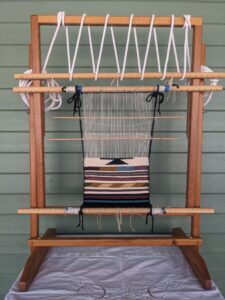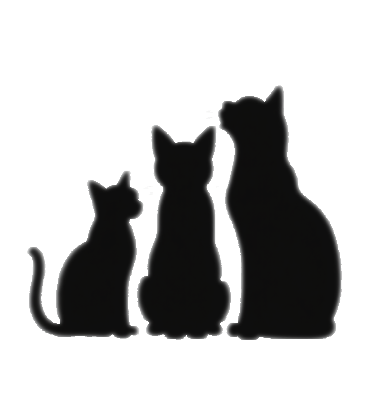Jan’s looms – Navajo-style weaving

Navajo-style looms are mostly plain, wooden rectangles that are placed vertically on the ground, the floor or a table. The warp thread is tightly spun single-ply wool. The weft thread is also single-ply wool. It is less tightly spun and can be any color. Usually around 4-8 colors are used in a single weaving.
Weaving is done from the bottom of the warp to the top. The warp is measured on a separate frame, off the loom between 2 dowels whose spacing is the height of the weaving. The single warp thread winds over and under the dowels until the desired number of warp threads are wound. A plied yarn is then twined through the warp loops (at the dowels) preserving the spaces between the warp threads. The plied yarn is then tightly tied to yet another dowel, between each warp loop and the initial dowel is removed. After this process has been completed for both the top and bottom of the warp, the dowels and warp are lashed onto the loom.
The top and bottom dowels that hold the warp are then stretched apart to maintain an even, very tight tension in the warp. After inserting a small diameter dowel and heddle loops (that define the two weaving sheds) the wool weft is placed between the two sheds starting at the bottom right corner of the warp. Weft yarns are often wound on a narrow dowel or a stick to facilitate insertion through the shed. Each row of weft is beaten into place with a Navajo-style wooden fork. As the number of weft rows that are inserted grows, the wooden fork is periodically swapped for smaller and a more delicate one. As the top of the weft gets to the top of the warp, a needle is used to place the last of the weft threads.
After the weaving is complete, it is removed from the loom and, if it is to be used as a wall hanging an envelope is sewn on the back to hold a hanging rod.
In Navajo-style weaving, there is no machinery. It is totally manual. The patterns are created as the weaving progresses with no drawing done in advance. It is the Spirit of Spider Woman that guides the pattern from start to finish. The feel of the wool in Jan’s fingers invites Jan to weave and the weaving itself communicates the pattern as she goes along. Thus Navajo-style weaving is very meditative and relaxing.
